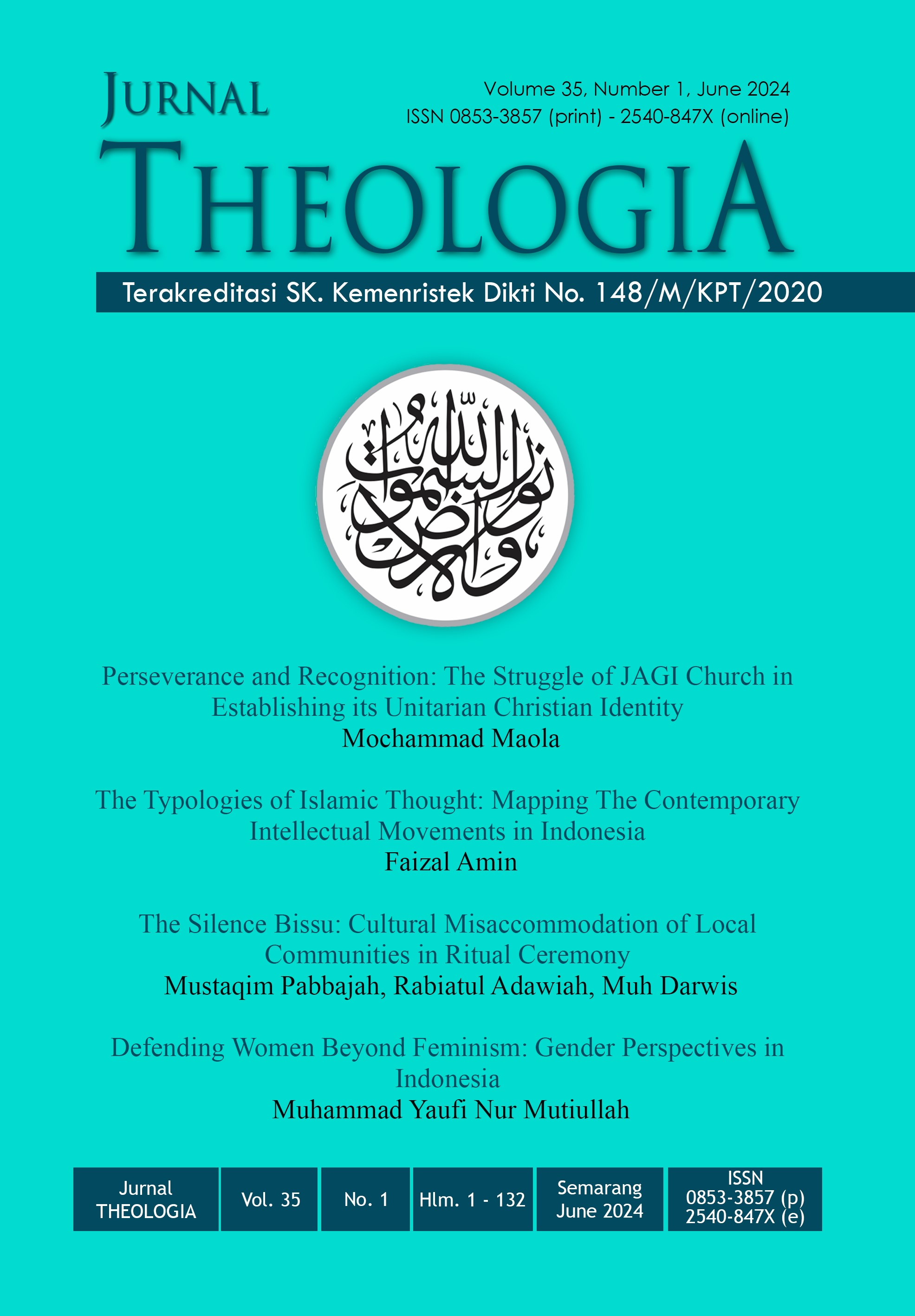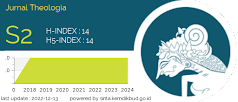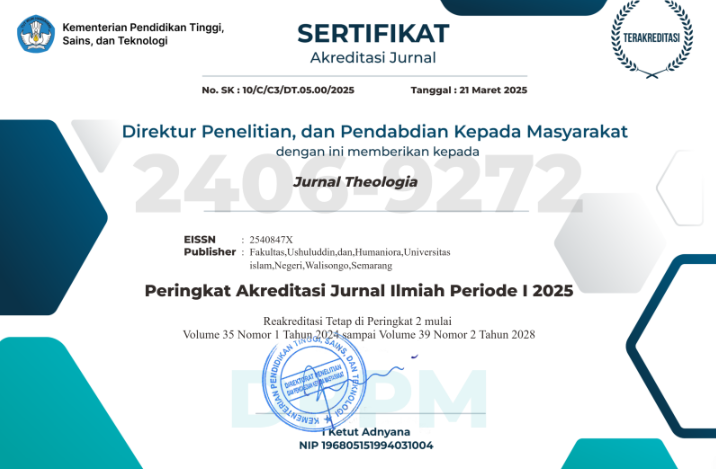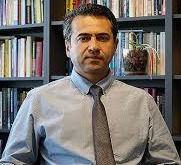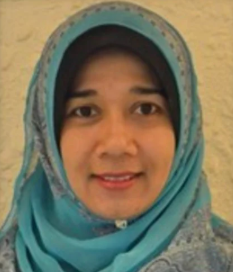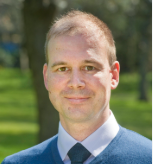The Silence Bissu: Cultural Misaccommodation of Local Communities in Ritual Ceremony
DOI:
https://doi.org/10.21580/teo.2024.35.1.20331Keywords:
Cultural Misaccommodation, Local Community, Traditional CeremonyAbstract
This article aims to explain how cultural misaccommodation of rituals in local communities can occur. Bissu as a component of society comes along with negotiations to maintain the rituals and religiosity that have shaped their identity. The presence of bissu in the ritual procession is an authority that they have culturally. Throughout the history of civilisation, bissu were the main, sacred and central party in the ritual procession. However, what happened on Bone's 62nd anniversary was a moment when bissu were not involved. This article is based on data obtained from online searches. News and article searches were conducted as a basis for analysing the cultural misaccommodation of local communities. This article shows that the misaccommodation of bissu in the ritual procession is a weakening of identity and existence. The government in this case becomes the party that eliminates bissu from its roots, the dynamics of polarisation of the ruling group along with a set of laws make bissu misaccommodation a hegemony. Along with the society that places bissu as a minority party, both socially and culturally. Therefore, it is necessary to affirm the authority of bissu as a party that maintains cultural sustainability.
Downloads
References
Agbaria, Ayman K. “Contact Religious Authority and the Creation of Hyper-Solidarity: Reflections on Israeli Politics and Islamic Political Thought.” Ethics and Education, 2019. https://doi.org/10.1080/17449642.2019.1587685.
Ahmatnijar, Ahmatnijar. “ULAMA BERBAGI OTORITAS: Fungsi Dan Peran MUI Kota Padanmgsidimpuan Dalam Meningkatkan Kesadaran Dan Budaya Hukum Masyarakat.” TAZKIR: Jurnal Penelitian Ilmu-Ilmu Sosial Dan Keislaman, 2016. https://doi.org/10.24952/tazkir.v2i1.407.
Azizah, Nurul. “Agama Dan Tradisi: Pergumulan,” 2022.
Badran, Leena, Hira Amin, Ayelet Gur, and Michael Stein. “‘I Am an Arab Palestinian Living in Israel with a Disability’: Marginalisation and the Limits of Human Rights.” Disability & Society, March 2023, 1–22. https://doi.org/10.1080/09687599.2023.2181764.
Baral, Balkrishna. “Accessibility and Governance Systems in Local Development: Measuring Marginality in the Mid-Marsyāngdi River Basin, Nepal.” In Perspectives on Geographical Marginality, 253–69, 2022. https://doi.org/10.1007/978-3-031-21325-0_17.
Bastiang, I. “PERAN TOKOH ADAT DI KOTA TERNATE DALAM MENINGKATKAN PARTISIPASI POLITIK MASYARAKAT PADA PEMILIHAN GUBERNUR DAN WAKIL ….” JURNAL POLITICO, 2020.
Bilung, Nelson. “Peranan Tokoh Adat Dalam Penyelesaian Provinsi Kalimantan Utara” 8, no. 4 (2020): 15–28.
Blagden, C. O. “The Achehnese. By DrC. Snouck Hurgronje, Adviser for Native Affairs, Netherlands India. Translated by the Late A. W. S. O’Sullivan, Assistant Colonial Secretary, Straits Settlements; with an Index by R. J. Wilkinson, Inspector of Schools, Federated Malay .” Journal of the Royal Asiatic Society of Great Britain & Ireland, 1907. https://doi.org/10.1017/s0035869x00035851.
Booth, Ken. Theory of World Security. Theory of World Security. Cambridge University Press, 2007. https://doi.org/10.1017/CBO9780511840210.
Bouchebouche, Hanane, and Hala Abutaleb. “Challenging Trauma’s Invisibility: Constructing Voice in AlAmmar’s Silence Is a Sense.” Theory and Practice in Language Studies 13, no. 5 (May 2023): 1304–9. https://doi.org/10.17507/tpls.1305.26.
Burns, Peter. “The Myth of Adat.” Journal of Legal Pluralism and Unofficial Law, 1989. https://doi.org/10.1080/07329113.1989.10756409.
Card, Kiffer G., and Kirk Hepburn. “Social Position and Economic System Justification in Canada: Implications for Advancing Health Equity and Social Justice from an Exploratory Study of Factors Shaping Economic System Justification.” Frontiers in Public Health 10 (October 2022). https://doi.org/10.3389/fpubh.2022.902374.
Carr, Anna. “COVID-19, Indigenous Peoples and Tourism: A View from New Zealand.” Tourism Geographies, 2020. https://doi.org/10.1080/14616688.2020.1768433.
Castro-Diaz, Laura, Maria Alejandra Garcia, Sergio Villamayor-Tomas, and Maria Claudia Lopez. “Impacts on Locals’ Livelihoods of Hydropower Development in the Global South.” Manuscript Submitted for Publication 169 (2022): 106285. https://doi.org/10.1016/j.worlddev.2023.106285.
Chaudhry, Saifullah. “Feminist Discourse and Rent Seeking Under Patriarchy.” In Civil Society and Pakistan’s Economy, 123–46. London: Routledge, 2023. https://doi.org/10.4324/9781003302896-8.
Crivelli, Carlos, Sergio Jarillo, James A. Russell, and José Miguel Fernández-Dols. “Reading Emotions from Faces in Two Indigenous Societies.” Journal of Experimental Psychology: General, 2016. https://doi.org/10.1037/xge0000172.
Danerek, Stefan. “Tata Liba Ceremony for Reconciliation and Healing (Palu’e Island, Eastern Indonesia).” Folklore: Electronic Journal of Folklore 85 (April 2022): 75–94. https://doi.org/10.7592/FEJF2022.85.danerek.
Davidson, Jamie S., and David Henley. The Revival of Tradition in Indonesian Politics: The Deployment of Adat from Colonialism to Indigenism. The Revival of Tradition in Indonesian Politics: The Deployment of Adat from Colonialism to Indigenism, 2007. https://doi.org/10.4324/9780203965498.
Detik. “Pertama Dalam Sejarah Tokoh Spiritual Bissu Tak Hadir HUT Bone.” Detik Sulsel, 2022. https://www.detik.com/sulsel/berita/d-6003791/pertama-dalam-sejarah-tokoh-spiritual-bugis-bissu-tak-hadir-hut-bone-ke-692.
———. “Tentang Bissu, Tokoh Spiritual Bugis Sejak Zaman Kerajaan.” Detik News, 2022. https://news.detik.com/berita/d-6005890/tentang-bissu-tokoh-spiritual-bugis-sejak-zaman-kerajaan.
Djordjevic, Nebojsa. “Decolonization of the Third Gender in the Contemporary Indonesia.” Sociologija 64, no. 3 (2022): 359–77. https://doi.org/10.2298/SOC2203359D.
Dorji, Tashi, Jigme Wangdi, Yi Shaoliang, Nakul Chettri, and Kesang Wangchuk. “Mithun (Bos Frontalis): The Neglected Cattle Species and Their Significance to Ethnic Communities in the Eastern Himalaya — A Review.” Animal Bioscience 34, no. 11 (November 2021): 1727–38. https://doi.org/10.5713/ab.21.0020.
Dova. “PERANAN TOKOH ADAT DALAM MEMPERTAHANKAN ADAT TUNGGU TUBANG PADA MASYARAKAT SEMENDO” 4, no. 5 (2016).
Dressler, W. W. “Indigenous Societies.” In Stress: Concepts, Cognition, Emotion, and Behavior: Handbook of Stress, 2016. https://doi.org/10.1016/B978-0-12-800951-2.00055-8.
Egbekpalu, Purissima Emelda, Paschal Onyi Oguno, and Princewill Alozie. “Dialectics of War as a Natural Phenomenon: Existential Perspective.” Conatus 8, no. 2 (December 31, 2023): 129–45. https://doi.org/10.12681/cjp.35281.
Faheem, Muhammad Afzal, and Nausheen Ishaque. “Marginalization, Mimicry and Subversion: A Bhabhian Reading of Mohsin Hamid’s the Reluctant Fundamentalist.” Forum for World Literature Studies, 2021.
Fitriansyah. “Batak Toba” 6, no. 1 (2017): 46–56. http://ejournal.unp.ac.id/index.php/iipk/article/view/8123/6207.
Ford, James D., Nia King, Eranga K. Galappaththi, Tristan Pearce, Graham McDowell, and Sherilee L. Harper. “The Resilience of Indigenous Peoples to Environmental Change.” One Earth, 2020. https://doi.org/10.1016/j.oneear.2020.05.014.
Frishkopf, Michael. “Paralinguistic Ramification of Language Performance in Islamic Ritual.” Yale Journal of Music & Religion 4, no. 1 (April 2018). https://doi.org/10.17132/2377-231X.1099.
Gumilang, Jatmiko Suryo, Haryono - Haryono, and Atik Catur Budiati. “PERAN SENTRAL FIGUR TOKOH ADAT DALAM UPACARA SEDEKAH GUNUNG DI DESA LENCOH KECAMATAN SELO KABUPATEN BOYOLALI.” Jurnal Analisa Sosiologi, 2018. https://doi.org/10.20961/jas.v5i2.18104.
Handayana, Sri, and Muhamad Rezi. “MTQ ; Antara Seni Membaca Alquran Dan Politik Akomodasionis Pemerintah Terhadap Umat Islam.” ISLAM TRANSFORMATIF : Journal of Islamic Studies 2, no. 2 (December 2018): 133. https://doi.org/10.30983/it.v2i2.747.
Hart, Gavin. “Why We Still Need Multiculturalism: A Critical Review of Approaches to Cultural Accommodation.” OMNES: The Journal of Multicultural Society 10, no. 2 (July 2020): 26–50. https://doi.org/10.14431/omnes.2020.07.10.2.26.
Hukum, Dosen Dalam, Pemerintahan Desa, Fakultas Hukum, Universitas Jambi, Edizal Hatmi, Ikhwanuddin Nasution, Asmyta Surbakti, et al. “Upacara Adat Kenduhai Sko Pada Masyarakat Kerinci Provinsi Jambi.” Antropologi Indonesia, 2017.
Hutchinson, Jonathon. “An Introduction to Digital Media Research Methods: How to Research and the Implications of New Media Data.” Communication Research and Practice, 2016. https://doi.org/10.1080/22041451.2016.1155307.
Ibrahim, Mohamad Syahrul Nizam, Shazali Johari, Mohamad Ibrani Shahrimin Adam Assim, Syamsul Herman Mohammad Afandi, Waseem Razzaq Khan, and Suziana Hassan. “Community Well-Being Dimensions in Gunung Mulu National Park, Sarawak, Malaysian Borneo.” Humanities and Social Sciences Communications 10, no. 1 (May 9, 2023): 226. https://doi.org/10.1057/s41599-023-01737-4.
Iman, Asrul Nur, Deddy Mulyana, Ahmad Gimmy Pratama, and Evi Novianti. “A Study of Transvestites: The Self-Presentation of Bissu.” Journal of Social Sciences Research, 2018. https://doi.org/10.32861/jssr.spi2.70.75.
Isman, Andi Nur. “Tantangan Bissu Bugis Di Era Modern, Minim Generasi Hingga Tekanan Moral.” Detik.Com, 2022. https://www.detik.com/sulsel/budaya/d-6007327/tantangan-bissu-bugis-di-era-modern-minim-generasi-hingga-tekanan-penolakan.
Kamuri, Johanis Putratama. “Menimbang Posisi Penganut Kepercayaan Marapu Di Hadapan Pemerintah Negara Kesatuan Republik Indonesia.” Societas Dei: Jurnal Agama Dan Masyarakat 7, no. 1 (April 2020): 73. https://doi.org/10.33550/sd.v7i1.129.
Kelurahan, Di, Duasudara Kecamatan, and Ranowulu Kota. “Peran Tokoh Masyarakat Dalam Meningkatkan Partisipasi Pembangunan (Studi Di Kelurahan Duasudara Kecamatan Ranowulu Kota Bitung).” Jurnal Politico, 2016.
Kingston, Jeffrey B. “Manipulating Tradition: The State, Adat, Popular Protest, and Class Conflict in Colonial Lampung.” Indonesia, 1991. https://doi.org/10.2307/3351064.
Kompasiana. “Tradisi 5 Gender Konstruksi Suku Bugis Apakah Embrio Homoseksual?” Kompasiana.Com, 2023. https://www.kompasiana.com/muhammadfahrizal0235/6425a78c4addee115e177d33/budaya-5-gender-suku-bugis-terbentuk-dari-kontruksi-spiritualitas-dan-subjektivitas-masyarakat-embrio-dari-homoseksualitas?page=1&page_images=1.
Lovett, Frank. “Cultural Accommodation and Domination.” Political Theory, 2010. https://doi.org/10.1177/0090591709354870.
Lyons, Kristina. “‘Nature’ and Territories as Victims: Decolonizing Colombia’s Transitional Justice Process.” American Anthropologist 125, no. 1 (March 2023): 63–76. https://doi.org/10.1111/aman.13798.
Manan, M. Azzam. “Ritual Tagi Jere Dalam Komunitas Etnik Kao: Peran Lembaga Dewan Adat Dan Badan Syara’ Dan Perkembangannya.” Jurnal Masyarakat & Budaya, 2014.
Marzuki, Nur Rofifah. “Ingin Sumbang Pemikiran Pengakuan Dan Hak Keragaman Gender Berbasis Kebudayaan, BRIN Teliti Bissu Sulsel.” Tribun Makassar, November 15, 2022. https://makassar.tribunnews.com/2022/11/15/ingin-sumbang-pemikiran-pengakuan-hak-keragaman-gender-berbasis-kebudayaan-brin-teliti-bissu-sulsel?page=2.
Mashuri, Mashuri, and Afriadi Putra. “Kepemimpinan Dan Peranan Tokoh Adat Dalam Pembangunan Di Kabupaten Kampar Provinsi Riau.” JURNAL TERAPAN PEMERINTAHAN MINANGKABAU, 2021. https://doi.org/10.33701/jtpm.v1i2.2099.
Monticelli, Daniele. “Reconfiguring the Sensible through Translation: Patterns of ‘Deauthorization’ in Post-War Soviet Estonia.” Translation and Interpreting Studies 11, no. 3 (2016): 416–35. https://doi.org/10.1075/tis.11.3.06mon.
Muhaimin, Abdul. “Bissu Tidak Dilibatkan Dalam Acara Mattompang Arajang Sambut HJB 692, Ini Kata Kadis Kebudayaan.” ENews, 2022. https://enewsindonesia.com/bissu-tak-dilibatkan-di-acara-mattompang-arajang-sambut-hjb-692-ini-kata-kadis-kebudayaan/.
Munthe, Hadriana Marhaeni, and Bisru Hafi. “Pemberdayaan Gender Pada Tokoh Adat Untuk Mendukung Peran Perempuan Dalam Pembangunan Desa.” Journal of Education, Humaniora and Social Sciences (JEHSS), 2018. https://doi.org/10.34007/jehss.v1i2.14.
Natalia, El Chris. “Pemilihan Penggunaan Bahasa Dalam Interaksi Sebagai Bentuk Adaptasi Antarbudaya Di Indonesia.” Jurnal Komunikasi Indonesia 4, no. 2 (January 2018). https://doi.org/10.7454/jki.v4i2.8883.
Nuha, Ahmad Arif Ulin, and Bambang Subahri. “Deotoritasi Guru Di Era New Media.” Bidayatuna: Jurnal Pendidikan Guru Mandrasah Ibtidaiyah, 2020. https://doi.org/10.36835/bidayatuna.v3i2.616.
Prasojo, Zaenuddin Hudi, and Mustaqim Pabbajah. “AKOMODASI KULTURAL DALAM RESOLUSI KONFLIK BERNUANSA AGAMA DI INDONESIA.” Aqlam: Journal of Islam and Plurality 5, no. 1 (June 2020). https://doi.org/10.30984/ajip.v5i1.1131.
Rahmi, Sri Warsidah, and Christina T. Suprihatin. “Beyond the Male-Female Binary, Issues of Identity in Pepi Al-Bayqunie’s Novel Calabai.” In Problematising Representation in Popular Culture, 2020.
Sepdwiko, Deria. “Upacara Adat Kenduhai Sko Pada Masyarakat Kerinci.” Besaung Jurnal Seni, Desain Dan Budaya 1, no. 1 (2016): 49–55. https://doi.org/http://dx.doi.org/10.36982/jsdb.v1i1.82.
Suheri, Suheri, Rabiatul Adawiah, Ahmed Sarjoon Razick, and Hasse Jubba. “Bissu on Contesting Indigeneity with Islamic Puritanism in the Sacred Arena.” ESENSIA: Jurnal Ilmu-Ilmu Ushuluddin, 2021. https://doi.org/10.14421/esensia.v22i1.2804.
Sujaya, Krisna. “IMPLEMENTASI UPACARA ADAT NYANGKU DI SITUS SITU LENGKONG PANJALU.” Jurnal Artefak 5, no. 2 (September 2018): 49. https://doi.org/10.25157/ja.v5i2.1935.
Untung, Moh Slamet. “Telaah Historis Pertumbuhan Pusat Pendidikan Islam Di Jawa Sampai Periode Perang Jawa.” Forum Tarbiyah 8, no. 2 (2013): 215–28. https://e-journal.iainpekalongan.ac.id/index.php/forumtarbiyah/article/view/170.
Wahyuni, Sri. “Analisis Pariwisata Budaya Dalam Pengembangan Aset Lokal Perayaan Upacara Adat Dahau Di Kabupaten Kutai Barat Provinsi Kalimantan Timur.” Jurnal Manajemen Aset Infrastruktur & Fasilitas 3, no. 1 (March 2019). https://doi.org/10.12962/j26151847.v3i1.5160.
Walsh, Kaitlyn T., Brandon L. Boring, Namrata Nanavaty, Adrienne R. Carter-Sowell, and Vani A. Mathur. “Lifetime Ostracism Experiences and Mechanisms of Pain.” Frontiers in Pain Research 3 (December 2022). https://doi.org/10.3389/fpain.2022.1037472.

